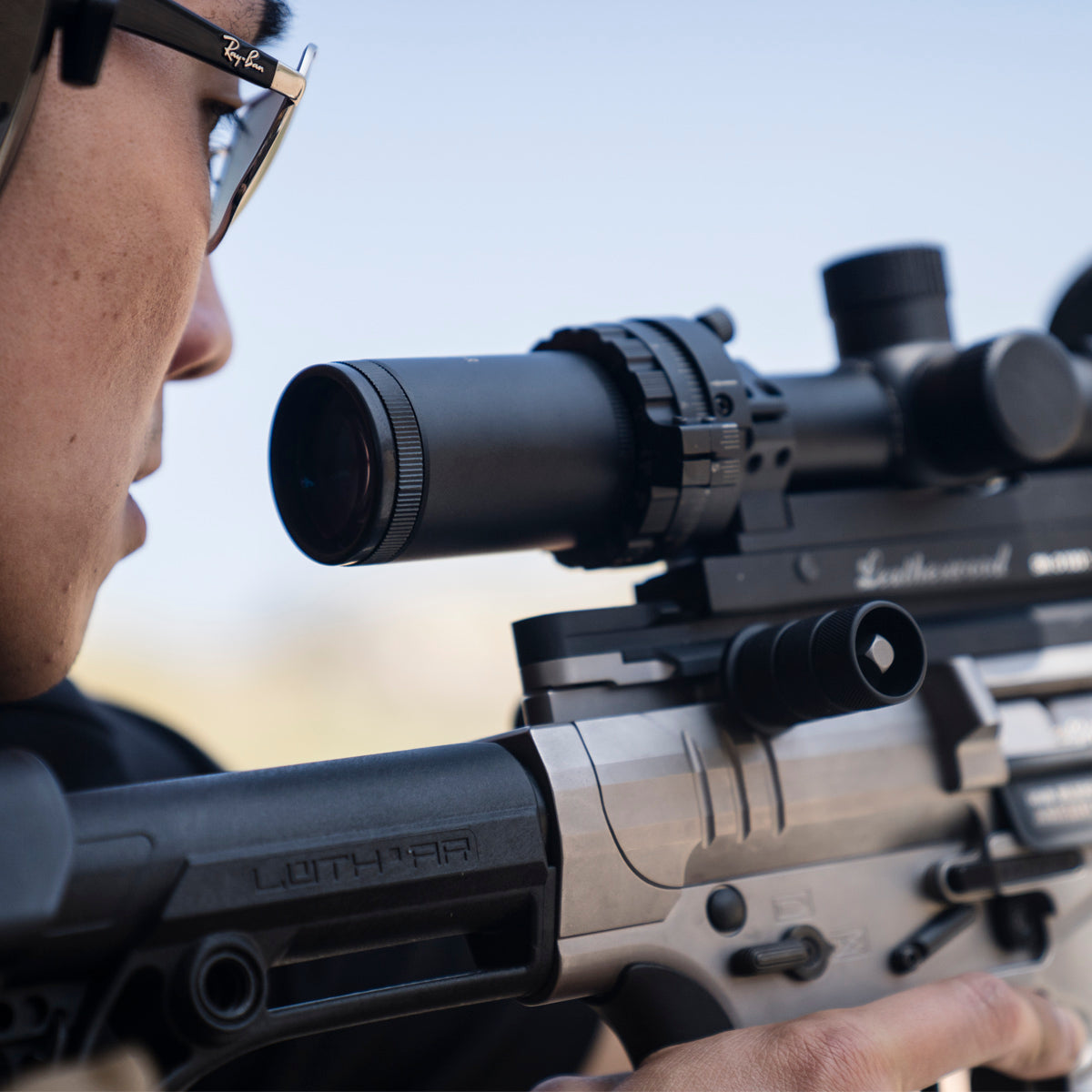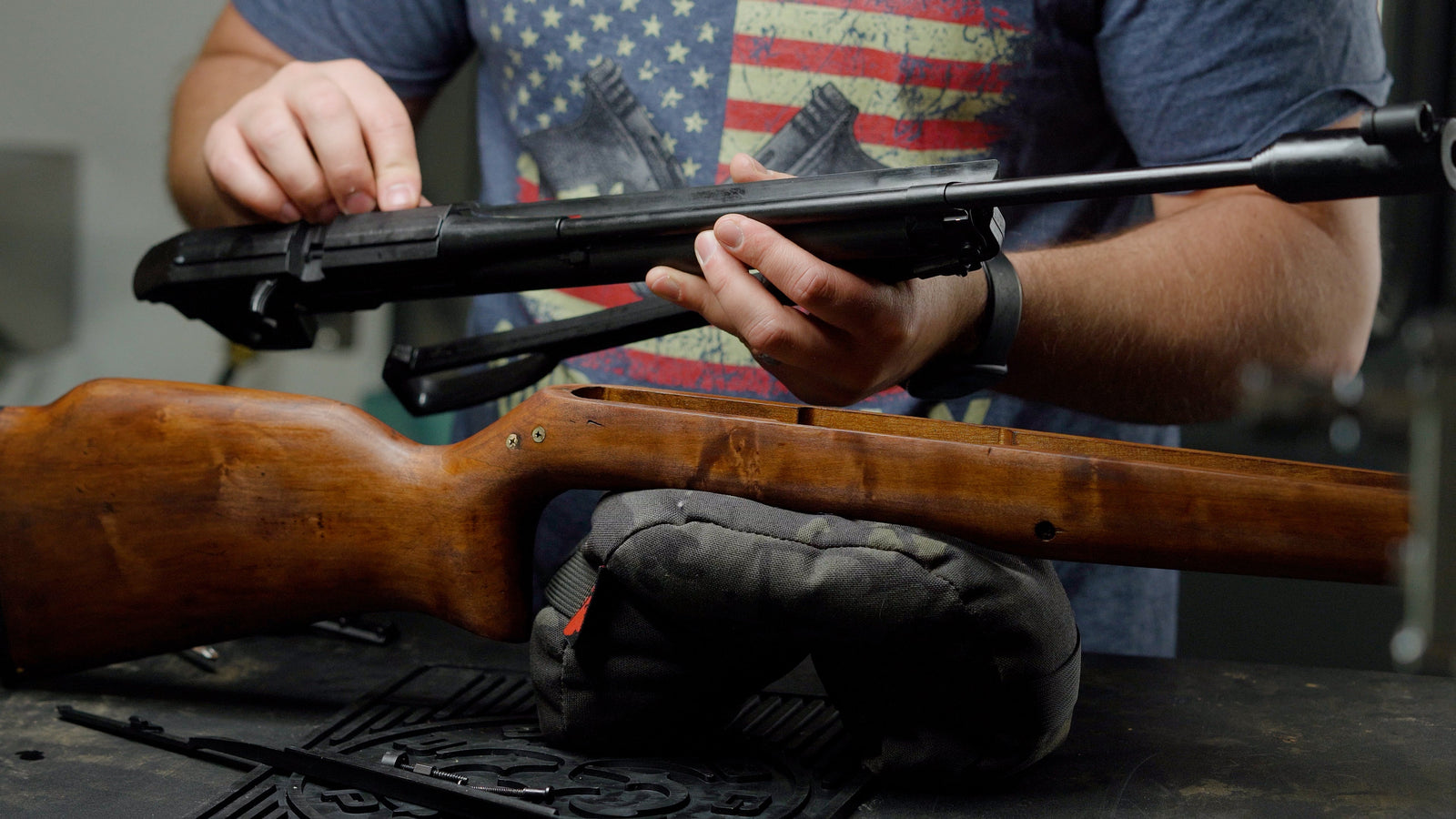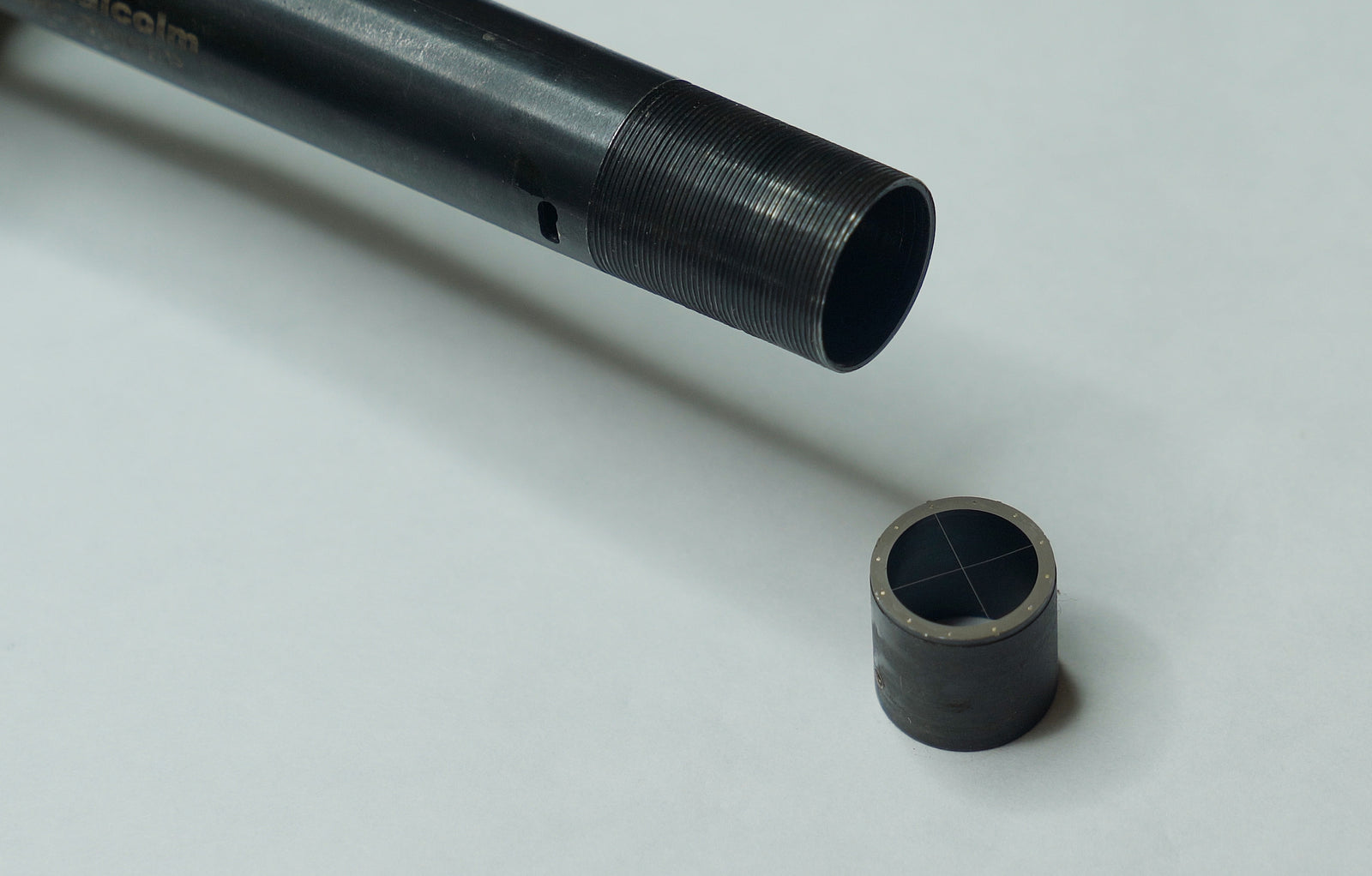The Leatherwood Auto-Ranging Trajectory scope requires being zeroed at a specific zeroing distance in order for the auto-ranging system to work properly. Sometimes shooters may not have access to that full 200 yard or 300 meter range required to zero the ART scope.
In this video we’re going to take a look at how to use our ballistic calculator or dope data from our rifle log to zero our ART scope at a closer distance. In order to obtain an equivalent 200 yard zero for the M1000 at 25 yards, we’ll first need to understand the relationship between the optic’s line of sight, the rifle’s line of bore, and the bullet’s path.
Because the scope is mounted above the rifle barrel, there will be a slight offset between the level of the bore and the line of sight of the optic. Once we get our optic adjusted down to the target at our range, when we line up our sight back on our target, the barrel will not be perfectly horizontal with the earth’s surface. Rather, it’s going to be angled slightly upwards. Because of projectile motion and the effects of gravity, the bullet’s path is going to cross our line of sight twice.
The first time the bullet crosses our line of sight is known as our first zero. The second time the bullet crosses our line of sight is known as the second zero.
Basically, we’re going to be using our ballistic calculator or DOPE data from our rifle log to calculate how high or low we need to be at 25 yards in order for our second zero to be at our zeroing distance. In the case of the M1000 PRO, we want our second zero to be at 200 yards.
[If you don’t have access to a ballistics calculator, you can check out our previous video on How We Use JBM Ballistics to determine your trajectory data]
For our rifle, we’re going to be shooting a 147 grain .308 Winchester. At 25 yards, we need to hit the target 1.5 inches below where we’re aiming for our second zero to get to 200 yards.
Now we can zero our optics approximately 1.5 inches high at 25 yards (or, zero the impact 1.5 inches below the sight). When you are zeroing the Leatherwood ART scope, you need to make sure the cam is at the lowest position - so that it’s not adding any external elevation to the scope.
In auto range mode, where the range ring and calibration ring are attached, you need to be at the lowest power setting.
If you are in manual mode, you need to make sure that the arrow on the top of the eyepiece lines up with the lowest cam setting. However, the range ring and calibration ring are going to be uncoupled. In manual mode you can set the power independently of the cam - however, the cam will not add automatic trajectory compensation.
Once you have finished zeroing at 25 yards, you can take this rifle to 200 yards to confirm your zero. Once you have confirmed your zero, you can begin the process of fine-tuning your art cam setting.
What other technical videos would you like to see from us in the future? Please comment below.





Colin McFadden
November 30, 2020
How do I go about getting a Manuel on how to adjust an original leatherwood art\mpc rifle scope?